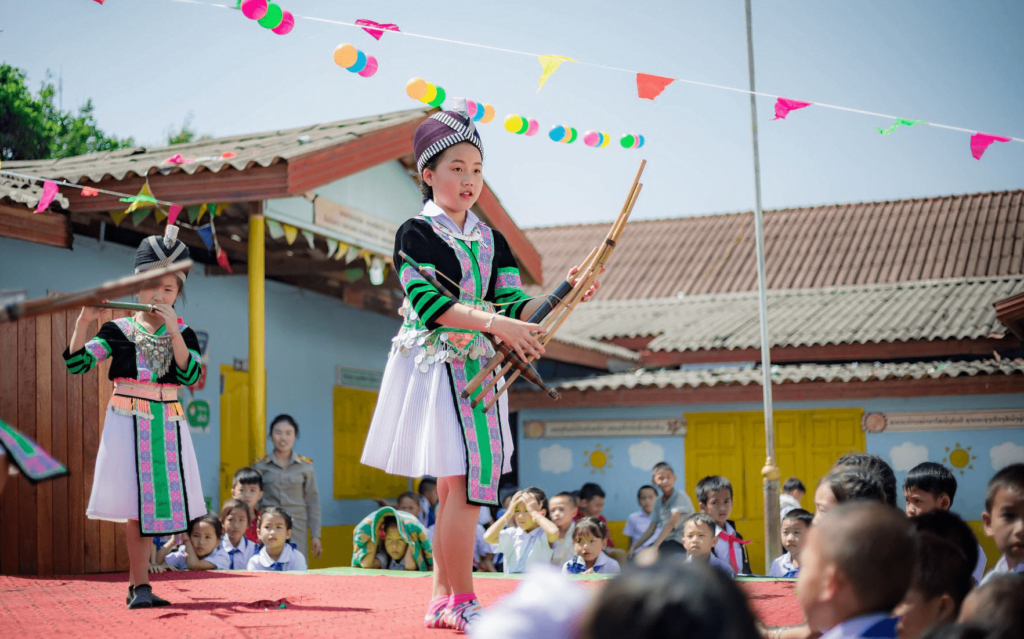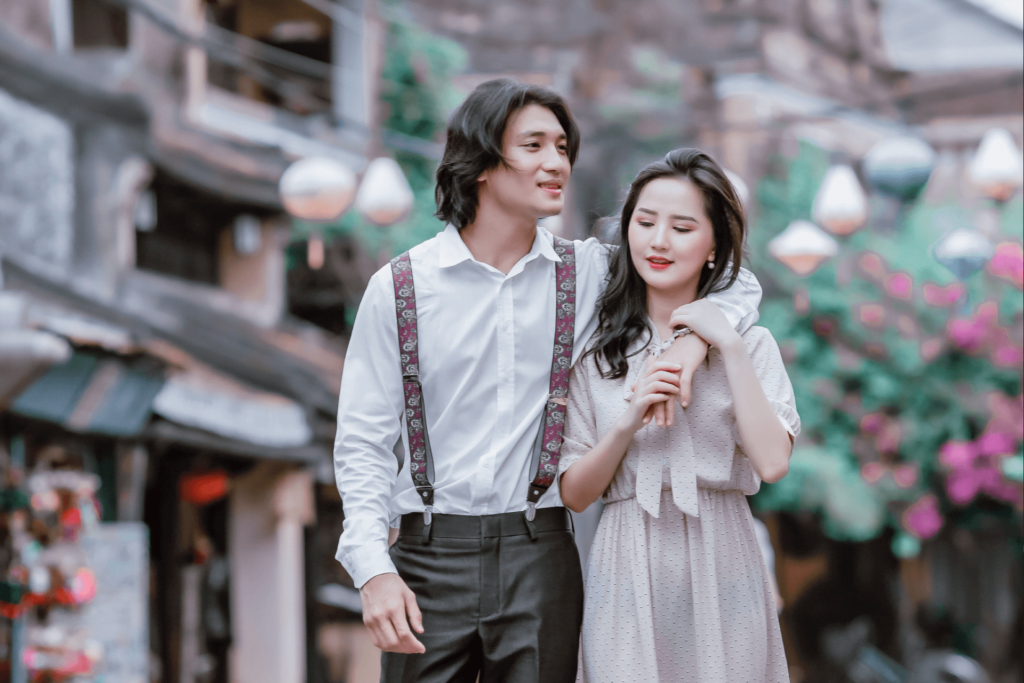
The Hmong Religion
Hello friends! I did a research paper on the Hmong Religion for my theology class. It was quite difficult because of the limited and varying resources. I also input some personal knowledge based on my experience with the religion. My research might not be entirely accurate because our teachings are deeply rooted in oral tradition, so if you have anything to add, clarify, or refute, please do so. I would love to edit and expand my research to educate myself and my fellow peers. With that addressed, I know you’re bored during quarantine, so give this a read! By the end, I hope you learn something new about the Hmong Religion.
Religion is a difficult concept to define, but in some ways, it is a practice that forms a community that encourages shared morals, beliefs, and values. Contrary to Western ideals of religion, religion seems to have a less constricting definition in other parts of the world. Studies of World Religion focuses on the most popular religions which are: Christianity, Islam, Hinduism, and Buddhism.[1] However, there are many other religions unaccounted for, whether that’s due to the debate about what constitutes a religion or simply because there are too many existing religions. This paper will focus on the Hmong’s syncretic religion.
The Hmong are an ethnic minority group that originated from China, but due to oppression and discrimination, migrated to Southeast Asia to populate the mountains of Vietnam, Thailand, Laos, and Burma.[2] During the Vietnam War, the CIA recruited the Hmong to help secure the Ho Chi Minh Trail, a trail that the North Vietnamese troops used to transport supplies to South Vietnam, in an attempt to gain an advantage. The alliance between the Hmong and the CIA was a covert operation that soon became known as the Secret War. The Secret War began in 1961 and ended in 1975, following the Fall of Saigon.[3] With the political instability in Laos and the new communist Vietnam, the Hmong were targeted for being American allies. The United States agreed to help their allies by evacuating the Hmong, stationing refugee camps in Thailand, and finding sponsors to help Hmong families resettle in the United States. Through centuries of migration in Asia and the recent relocation across the globe, the Hmong have changed in many ways including their religious practices.
The Hmong religion is often mistakenly labeled as Shamanism, a mistake common among Hmong people themselves. However, Shamanism is not a religion; instead, it is a healing practice.[4] The Hmong religion is a complex blend of Animism, Buddhism, and Daoism with many other religious influences.[5]The mislabeling stems from the large role that shamans, spiritual mediums, play in the Hmong religion, but the religion goes beyond the scope of spiritual healing. Other important parts of the Hmong religion include ancestral worshiping, hu plig (soul calling) rituals, funeral rituals, and wedding ceremonies. Since the Hmong religion is a syncretic religion, a mixture of different religions, it is hard to define and label it. The heavily spiritualistic practices and strong belief that every existing thing in this world possess a soul has earned the religion the label of Animism. However, the Hmong religion is not constrained to Animism, because it has many other religious influences. The Animism label aligns with the Western thought of religion, not the life stylistic definition of religion in other parts of the world.
Hmong religious practices are heavily based on the belief that there is another world that exists beyond our world, and there is a need to maintain harmony and balance in both worlds to obtain good karma for reciprocated karma and a good rebirth. Our world is known as yaj ceeb, the equivalence to the Daoist yang, and the other existing world is known as yeeb ceeb, the equivalence to the Daoist yin. Yaj ceeb encompasses all physical things that exist in this world that we can see such as humans, animals, and plants. Yeeb ceeb can be described as a supernatural world that we cannot see and believed to be inhabited by deities, divine beings, spirits, and ghosts.[6] These beings are categorized and put into a hierarchy similar to the Bureaucratic Gods in Chinese popular religion. The two worlds coexist simultaneously, meaning yeeb ceeb isn’t an unreachable place, it is simply a realm that normal human beings cannot access. Therefore, order needs to be maintained in both worlds to have a harmonious life.
Although normal humans cannot see what exists in yeeb ceeb, there are special spirit mediums called shamans who have the ability to access it. Shamans are chosen by dab neeb, literally meaning spirits for shamans, and informed through a series of dreams. If a person accepts their position as a shaman, they must seek a xib hwb, or a master, to help them learn how to control and interact with their dab neeb. When this relationship is established, the dab neebwill start teaching the shaman how to perform religious rituals.[7] There are different types of shamans with different skill sets that allow them to specialize in certain types of religious rituals. For example, some shamans can see everything in yeeb ceeb while others can only hear and feel it. Some shamans have the skills to negotiate with divine beings, such as dragons; whereas other shamans specialize in fighting off evil spirits. However, every shaman’s duty is to perform religious rituals to heal the people of yaj ceeb by doing work in yeeb ceeb. Since shamans are the only people who can connect the two worlds, they are well respected by members of the community. When a person consults a shaman, they usually bring gifts and bow before stating their concerns and making their requests. To clarify, this is a sign of respect, not worship. Accepting the position of a shaman comes with hard work, responsibility, and a compassionate heart. On the other hand, refusal of the position will lead to sickness and misfortune, because the chosen person is refusing to help others maintain balance in life. It is believed by some that shamans are chosen because they must repent for their wrongdoings in their past life in order to gain good karma. However, others believe that shamanism is hereditary because the dab neeb are already affiliated and familiar with the family lineage.
Despite the debate about why certain people are chosen to be a shaman, origins of the first shaman go back to the story of Siv Yis. When Ntxuj Nywg, the deity of judgement and reincarnation, sent disastrous diseases to kill humans, Yawm Saub, the deity of fertility and reproduction intervened. Yawm Saubdoes not mingle in human affairs unless necessary, so instead of confronting Ntxuj Nywg, he chose Siv Yis, a human to do it in his place. Yawm Saubgifted Siv Yis with the ability to see yeeb ceeb and supernatural powers to battle with Ntxuj Nywg. After order was restored, Siv Yis ascended to the deity realm because of his heroic act. With no one who had the ability to access yeeb ceeb, the humans begged Siv Yis to come back and help them. He agreed but on one condition: everyone must celebrate his arrival on the thirteenth day of the twelfth lunar month. However, the humans failed to hold their end of the deal. Angered and disappointed, he threw away his magical shaman instruments and returned to the deity realm. Those who picked up his instruments became the first group of shamans to exist.[8] These days, shamans still use the instruments of Siv Yis to perform religious rituals. Additionally, shamans build an altar in their home to give a place for their dab neeb to stay and to worship Siv Yis. The altar is constructed of jasmine rice paper with offerings such as rice, water, puffed corn, and incense.
Every Hmong home has a xwm kab, an altar dedicated to ancestral spirits who protect the home. This altar is remade yearly during the Hmong New Year. The specific ritual is called noj peb caug, or “eat thirty,” because the family’s harvested food is cooked and offered to the ancestral spirits for consecutive thirty days. However, in modern times, this has decreased to three days for convenience. The male head of the household sits at the table with the food and chants a few words, asking the ancestors to come eat. After this is done, the family can eat the meal which is thought to be blessed with good fortune. After three days of offering meals, a hu plig (soul calling ritual) is done by an experienced elder. A live rooster and hen are set at the front door with a bowl of uncooked rice, uncooked eggs, and incense. The elder chants to call each family member’s soul to come home and enter the new year together. One at a time, each family member’s name is called and a kuam (split horn) is used to determine whether the soul has returned or not. If the kuam does not indicate that the soul has returned, the calling continues until it does. Red strings are then tied onto each family members wrist to offer blessings and protection for the upcoming year. Then, the chickens and eggs are cooked to be examined since they are used as oracles to foresee the new year. Finally, the old xwm kab is taken down and replaced. It is made with jasmine rice paper and the blood and feathers of the sacrificed rooster. This altar is less extravagant than the shaman’s altar for their dab neeb and Siv Yis. It is believed that offerings to the ancestors are reciprocated with protection and good fortune. Aside from shamans worshiping Siv Yis, offerings to other deities are very uncommon these days.
Death is extremely important for the Hmong, because the soul enters yeeb ceeb and travels to reunite with their ancestors where they wait for judgement from Ntxuj Nywg to reincarnate.[9] Therefore, Hmong funerals are extravagant, lasting up to two weeks in the past. However, these days, funerals have been reduced to generally three days. The reason why Hmong funerals last so long is because of the religious rituals needed to be performed to help guide the soul to their resting place. It takes a team of people and the family’s help for the funeral to happen. If the funeral is done incorrectly, the soul will wander aimlessly for eternity or a shaman must perform a difficult ritual to help the soul. Txiv qeej txiv nruas are men who are skilled at playing the qeej (mouth reed) and funeral drum and play these instruments during the religious chanting and songs performed by an experienced elder to help the soul navigate the unfamiliar yeeb ceeb. The older the deceased is, the longer the chanting continues. This is because they have lived longer and therefore, a longer journey to make. During some of these chants, close family members are expected to participate in xyom to show respect and receive good karma from the deceased. Family members kneel and bow with incense as the drums, qeej, and chants continue. Sometimes this takes upwards of three hours. Animals, usually cows, are sacrificed and meals are prepared by relatives to serve the guests. Snacks are distributed throughout the day and night because many guests, and especially family members, do not leave for the entire duration of the funeral. Hmong funerals are complicated to do and learn about, and the elders are afraid that the tradition of Hmong funerals will slowly disintegrate.
When the soul arrives to their destination, the funeral ends with a burial. The family invites all the guests to their home for one last meal as a thank you. Although funerals are a sad occasion, since the soul continues existing in yeeb ceeb, people are taught to look at the positives. In yeeb ceeb, the soul is reunited with their family members who have passed before them. They continue to live there in a sort of parallel life to this world. Slowly, they will start to lose their memories of their life in yaj ceeb. Souls wait for judgement from Ntxuj Nywg who examines their karma and assigns them reincarnation. The reason why ancestors are worshiped is because some souls continue to exist in yeeb ceeb for a long time as they await their judgement and rebirth date. Some souls simply wait to reunite with family members who are still alive. The Hmong’s idea of the afterlife and rebirth is an interesting concept that seems to draw from Hindu and Buddhist beliefs.
Another important part of Hmong religion is respecting all things on earth, because every natural thing has a guardian spirit to ensure proper order. Some guardian spirits are well known in Hmong myths and legends, while most are not. When men go hunting, they usually light incense and chant to let the guardian spirit know that they are only there to take as much as needed. If this promise is broken or the guardian spirit senses greed, misfortune such as illness can struck the person or persons involved. Therefore, a shaman must be consulted to find the problem and negotiate a solution such as food offerings for the guardian spirit.
The same situation can happen with fishing as well. However, this time the problem is not between humans and guardian spirits, it is between humans and divine creatures known as dragons. Dragons are known by shamans to be one of the most powerful and devious creatures to exist. They have an entire kingdom established and control all bodies of water, even rain. Dragons usually seek attractive men and women to “marry.” They will come into dreams as attractive men and women, trying to convince a person to leave with them. Many shamans claim that dragons are the most difficult beings to negotiate with. It takes a very skilled shaman to be able to perform a religious ritual to get rid of the dragon and retrieve a person’s soul.
Although there are guardian spirits who protect natural land and dragons who lurk in the waters, there are also evil spirits that roam the earth. In fact, hungry and evil spirits are thought to be everywhere among us. These spirits can attach themselves to a person, causing discomfort and sickness. Sometimes, if an evil spirit finds a person attractive, they will attempt to take the person’s soul so they can be together. Spirits can only do such a thing if the person’s soul is in a vulnerable state. For example, their soul is weak due to sadness, their soul is unprotected, they lost their soul because of a scary accident, etc. The severity of sickness as a side effect from the spirits depend on how vengeful and persistent, they are to pursue a person. If left untreated, a person can possibly die. Again, in these situations, a shaman is called to help retrieve the soul and negotiate with the spirit through a religious ritual.
The religious rituals that shamans perform are called ua neeb. Asmentioned previously, each shaman has their own skill set and strength, so they perform their rituals a little bit differently. However, all shamans use the same instruments: a shaman hood, cutlass, bell rings, a gong, a special circular rattle, and a bench. The shaman’s hood allows them to veil themselves and see into yeeb ceeb. The cutlass is usually stuck into a bowl of rice and is there in case it is needed for difficult situations. The bell rings are worn around the fingers and with the special rattle in the other hand. This is the harness to the shaman’s horse that exists in yeeb ceeb. Lastly, the bench represents the shaman’s horse that also exists in yeeb ceeb. The shaman sets up their altar under the family’s altar with rice, water, rice wine, tea, corn (for the horse), candles, incense, and the family’s kuam.[10] Each shaman has an assistant, usually their significant other or a family member, to beat the gong and assist in the ritual when needed.
The shaman will either perform ua neeb muag dawb or ua neeb muag dub. Ua neeb muag dawb is done in a non-possessive state, usually to identify and fix misfortune within the family. Perhaps the ancestral spirits are hungry and need food offerings or the family has offended a guardian spirit and needs to apologize for it. Ua neeb muag dub is done in a possessive trance where the dab neeb guides the shaman into the afterlife in yeeb ceeb and interact with spirits and divine creatures. This is usually done when someone is severely sick due to their soul being taken by a spirit of divine being.[11]
Although these two rituals are performed in different states, the shamans still follow a similar routine. The shaman will veil themselves and sit on the bench as their feet, hands, and body begin to shake. When things intensify, the shaman will start jumping up and down on the bench, sometimes even jumping on and off the bench. This is when the assistant is needed. The shaman will start chanting and, in some cases, speaking in tongue to communicate with the spirits. These shaman rituals can last up to two hours long. Sometimes, when the shaman is dealing with an angry or powerful spirit, it takes even longer. When the shaman returns to their normal state, they debrief with the family. After everything is settled, a big meal is prepared to thank the shaman. These rituals are very interesting to watch but hard to comprehend, even for Hmong people who grew up witnessing it.
Among shamans there are also many others who possess supernatural talents such as herbalists who have herbal spirits that come into their dreams and help them discover new herbs, fortune tellers who foresees the future, and people who can do magic to heal wounds, make protection amulets, and even perform black magic. The Hmong religion is a religion built upon the foundation of acknowledging life beyond this world, ancestral worshiping, and magic to maintain harmony in life.[12]
Since many of the sponsors who helped the Hmong relocate to the United States were affiliated with the church, Christianity was introduced to the new immigrants. Many of the first families to convert to Christianity did so not necessarily because they believed in the teachings of the bible, but because they were desperate for spiritual protection. They believed that Jesus Christ would offer them spiritual protection if they worshiped him and respected his teachings.[14] So, in some ways, the ancestral spirits who provided protection for the family were replaced with Jesus Christ. This worked for some families while other families believed this angered their ancestors. Many families chose to continue practicing the Hmong religion as best as they could, while others converted to Christianity. Of course, each family had their own reasons to convert, but spiritual protection was one of the key factors in the beginning. Nowadays, Hmong Christians study the bible because they believe in the power, love, and teachings of Jesus Christ.
This seems to be the first time that the Hmong have completely split in religious beliefs. Since the Hmong religion is integrated into their lifestyle, traditions, customs, and history, the Hmong who still practice the traditional religion are afraid that converting to Christianity will be detrimental to the Hmong culture and identity. There is still some essence of traditional Hmong religious practices present in Hmong Christians because of its life stylistic nature. However, many of the traditional religious practices clash with Christian beliefs, separating Hmong Christians and Hmong traditionalists even more. It will be interesting to see if Hmong Christians will stray further away from the traditional religion or integrate it into their Christian beliefs and practices.
After centuries of discrimination and persecution for their lifestyle and religious beliefs, the Hmong religion has continued to survive through oral tradition. The resettlement in the United States introduced a dichotic religion that pose controversy in the Hmong community. With the traditional religion so intertwined in Hmong culture, and the loss of cultural identity in with the new generation, there is no telling what direction the continuation of religious practices in the Hmong American community will go.









Responses